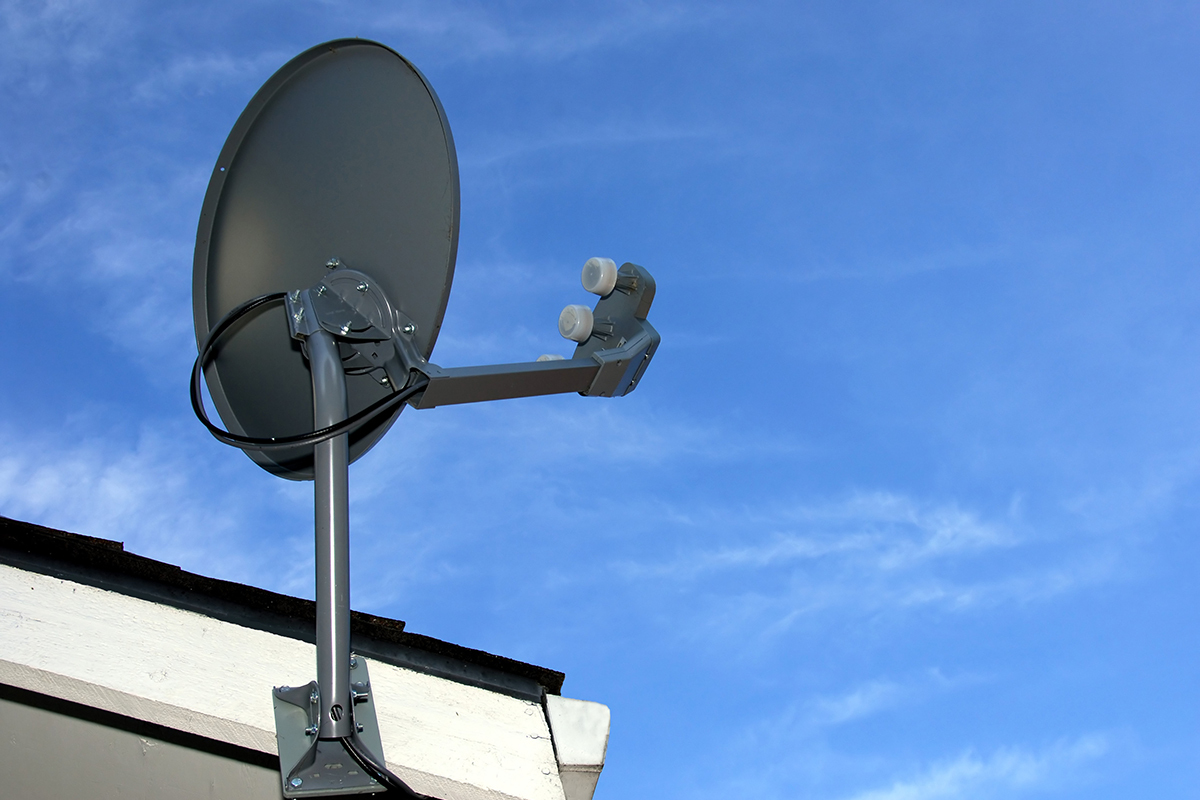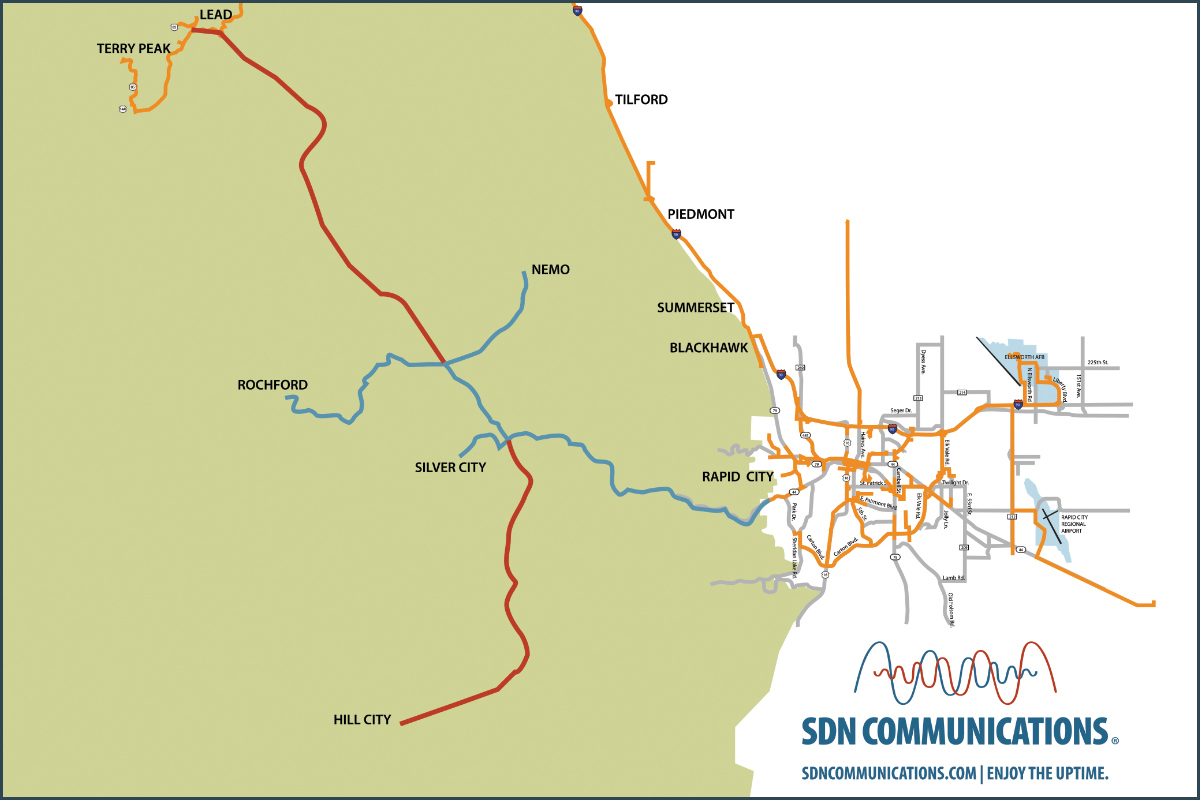
As people unwrap and configure all their new internet-connected Christmas gifts, the quality of that home or business internet connection suddenly becomes important.
However, few probably give thought to what kind of technology connects them.
With the state of South Dakota’s heavy investment in fiber connectivity for residential and business internet, critics argue satellite services could be the better option.
A national internet connectivity expert based in Mitchell says that’s wrong for several reasons.

Vantage Point founder and owner Larry Thompson made his case before South Dakota Public Utilities Commissioners and staff at a forum recently hosted by the rural, independent broadband companies of South Dakota.
1. Satellites don’t have the speed or capacity
Consumers’ insatiable appetite for speed and capacity ranks as the main reason satellites can’t feed broadband connectivity efficiently. Consumers continue to add devices to their home and business networks or use applications that require more capacity and speed. Upload and download speed demands increased 35% annually over the past 10 years according to the FCC’s own measurements, Thompson says. That will equate to 4GB consumer connections by 2030. Satellites can’t deliver that to the thousands who don’t have broadband today; fiber can deliver Gigabit speeds and beyond.
“With no plateau in sight, fiber is the only way to meet the long-term customer demand,” Thompson says.
Fiber connectivity is “future proof,” meaning its ability to deliver speed and capacity are limited only by the electronics on the end, which are constantly improving. In fact, fiber enables 5G to work.
Additionally, fiber delivers symmetric download and upload speeds. Most internet packages have much smaller upload speeds, but it’s those upload speeds that enable better video conferencing, streaming video, gaming, and improved Virtual Private Network (VPN) experiences.

2. There aren’t enough satellites
The numbers are very challenging, even for billionaire Elon Musk, who has an aggressive launch plan for his Starlink Low Earth Orbiting (LEO) satellites, many of which will support internet capabilities. Musk wants 42,000 LEOs in the sky within nine years; he has launched 1,900. Thompson says Musk would need to put up 700 per month forever to maintain a satellite network of this size.
Musk’s ambitious plan is massively expensive. Even he acknowledges a genuine risk of bankruptcy, especially considering the lifespan of the satellites is only five years. Fiber optic longevity, by comparison, is 20 to 40 years, and its 30-year cost of maintenance is lower than other technologies.
3. Fiber is not a shared product
Anyone who has a cable or DSL internet connection has experienced slow internet when the neighborhood’s kids get home from school or everyone is at home during a winter storm. Fiber-to-the-premises connection means the connection is typically dedicated to your home or business only – no sharing bandwidth with your neighbors’ consumption. It can depend on the network architecture, so it’s worth asking your provider.
4. Improved home value
The National Association of Realtors’ research says fiber to the home improves a home’s value by 3% because it is the preferred technology.

5. Reliability and customer cost
Satellites need a direct line of sight to the receiving equipment on homes or businesses. Weather, trees, or rock (think of the Black Hills) can block signals or cause interference. Consumers don’t like paying $500 for the equipment and $99 per month for an unreliable service delivering 100 Mbps, Thompson says.
Fiber optic service is known for its reliability. That’s why SDN Communications has been installing fiber across the region for more than 30 years. SDN and its owner/member companies’ network has 50,000 miles of fiber in South Dakota.
In fact, SDN and its members have pitched fiber solutions every time in their public-private partnership with the state of South Dakota’s ConnectSD program.
“The initial investment might be more,” Brown says. “But it is often a lower, long-term investment because of the long-expected life of fiber cable. And given its reliability and longevity, it’s the best investment and quality product.”
The state of South Dakota agrees. Mike Waldner runs the ConnectSD grant program for South Dakota. The state’s view is that it can’t create sub-quality connectivity for some communities and fiber for others.
That’s not to say there isn’t a place for satellite or fixed wireless solutions, especially if a potential connection is too remote or the topography doesn’t yield to plowing fiber in the ground.
That’s where a hybrid solution works, like SDN is doing with its federal ReConnect grants in the Black Hills.

There, SDN will plow fiber to a tower into three tiny towns – Nemo, Rochford, and Silver City – plus eight towers near residents and businesses along the Highway 385 corridor between Lead and Hill City. The tower will be used to broadcast a fixed wireless internet signal to the homes and businesses within a line of sight.
“Today, it’s too expensive to plow fiber in the Black Hills granite to every home or business, so the wireless solution will get them an acceptable service sooner,” Brown says. “And in some cases, where the cabins or businesses are even more remote, satellite might be the only viable service.”
But wireless and satellite services should be the exception to the rule, Brown says.
The public-private partnerships make fiber the best option and investment for the state of South Dakota and its citizens, he says.
SDN Communications is a leader in providing Dedicated Internet Access, Ethernet Transport Services, Wavelength, and managed services to businesses and organizations with multiple locations throughout the region.




